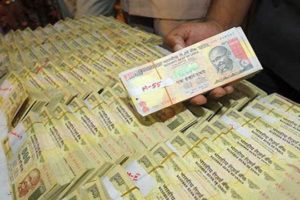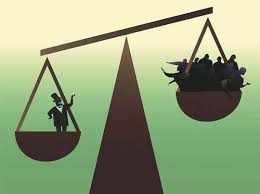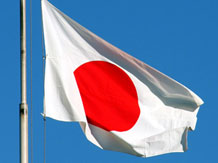 Multipurpose Empanelment Form of ICAI (MEF-ICAI), an online application, is meant for allotment of Bank / Branch Audits to the ICAI Members/ CA Firms, which can be filled and submitted at the MEFICAI website directly.
Multipurpose Empanelment Form of ICAI (MEF-ICAI), an online application, is meant for allotment of Bank / Branch Audits to the ICAI Members/ CA Firms, which can be filled and submitted at the MEFICAI website directly.
Online Multipurpose Empanelment Form (MEF) for the year 2016-17 is live at www.meficai.org. The last date for submission of online MEF Form for the year 2016-17 is 31st August, 2016 and for submission of hard copy of “DECLARATION FOR MEF 2016-17” is 12th September, 2016.
In case, an applicant faces any problem regarding MEF, complaint may be lodged by accessing complaint-box link available on www.meficai.org
In case, the complaint is not resolved or replied within a week, members can call at 011-30110444, 30110411, 30110440, 30110480, 30110438, 30110451 and 30110508 (between 3.00 PM to 5.00 PM on all working days).
With kind regards,
Prafulla Premsukh Chhajed
Chairman, Professional Development Committee
ADVISORY FOR FILLING MULTIPURPOSE EMPANELMENT FORM 2016-17
GENERAL INSTRUCTIONS
| 1 |
Last date for submission of Form on the website www.meficai.org is 31st August, 2016 . Members are advised to fill MEF well in advance to avoid last minute rush. |
| 2 |
Please use Internet Explorer 6.0/ Mozilla Firefox 7.0 or later versions to fill MEF 2016-17. |
| 3 |
The information filled in by the Applicant in MEF can be edited/modified any number of times before online submission. But once it is submitted, it cannot be edited. |
| 4 |
All correspondence, acknowledgement, discrepancy letters, etc. will preferably be through e-mail only . Please fill up email id correctly and ensure that it is active. |
| 5 |
It is must to provide correct contact details i.e. telephone number, email id and also to keep track of these as and when allotment procedure starts. |
| 6 |
MEF 2016-17 has been divided into three parts: |
|
Part A: For Bank Branch Auditor’s panel
Part B: For Additional information for Multipurpose Empanelment
Part C: For panel of Cooperative Societies and Cooperative Banks |
| 7 |
Applicants having minimum continuous standing of 3 years in profession as on 1.1.2016 would be eligible for MEF for the year 2016-17 alongwith other RBI Norms available at http://www.icai.org/new_post.html?post_id=725&c_id=91 |
| 8 |
This year, for the first time, efforts are being made for giving facility of Digital Signatures (Optional) for submission of declaration which will be active from 16thAugust, 2016. In case, you have any technical issues regarding digital signatures, you may send a hard copy of the declaration manually signed by partners/Proprietor/Individual who have not been able to sign digitally. |
| 9 |
Members holding full time Certificate of Practice/firms existing as on 01.01.2016 are advised to fill the MEF Form and submit full details in the MEF as this panel will also be available for the assignments other than the Bank Branch Audit. |
| 10 |
Criteria of Categorization, Rotation and Resting are as per the prevailing norms issued by Reserve Bank of India and are subject to change from time to time. |
|
UNIQUE CODE NUMBER (UCN) |
| 11 |
(a). Unique Code Number (UCN) is very important as it facilitates compiling the applicants’ bank audit experience. Therefore, an applicant must ensure that correct UCN appears in the MEF. |
|
(b). If the applicant has never been allotted UCN at any point of time, UCN will be allotted to all (first time) eligible firms/Members at the time of preparation of the Bank Branch Auditor’s Panel. |
|
(c). If UCN was allotted earlier, please mention the same in Memorandum of Changes (MoCs) and hard copy of declaration, in case it is not appearing in the MEF. The changes will be incorporated in MEF Database after due verification. |
|
(d). UCN will also be allotted to the non-eligible applicants for Bank Branch Auditor’s panel so that their data can be sent to the requisite authorities for other Bank Audits and other assignments. However, the following applicant will not be allotted UCN:
1. Member practicing in his individual name not holding full time CoP and/or associated as Partner/ Proprietor/Chartered Accountant employee in any other firm.
2. In case of firm, if none of Partner/Proprietor is exclusively associated with the firm i.e Partner/Proprietor should not be Partner or Proprietor of any other firm and/or not holding fulltime CoP. |
|
(e). Applicant practicing in individual name should continue to use the same UCN in case he forms a sole proprietary concern. If UCN was allotted earlier in Individual capacity same will be incorporated in MEF Database after due verification . |
|
EXPERIENCE OF BANK AUDIT |
| 12 |
Members may note that experience in capacity, as Articled/Audit Assistant or paid employee/assistant should not be added in experience columns’ to be mentioned in questions of MEF. |
| 13 |
Please do not associate with the same Bank (of which the applicant is appointed as statutory auditor) or any of its subsidiaries/associates, as Concurrent/Internal/Income and Expenditure /Revenue/Stock Auditor or Accountants etc. of the bank/branch of banks & monitoring of borrowing of sick unit. |
| 14 |
Please don’t take a loan (including outstanding on credit card) from or give a guarantee to a loan from the same Bank (of which the applicant is appointed as statutory auditor) or any of its subsidiaries/associates. |
| 15 |
Please don’t accept the position of a Director on the Board of the same Bank (of which the applicant is appointed as Branch Statutory Auditor) or any of its subsidiaries/associates. |
| 16 |
While filling experience in various questions of MEF, if an applicant has done audit of two or more than two entities as Statutory Central Auditor and/or as well as Branch Auditor of a Bank for the same year, the experience should be filled as of one year only. |
|
PROCEDURE FOR LOGGING INTO MEF |
| 17 |
MEF is designed differently in case of Sole Proprietary Concern, Partnership Concern and Members Practicing in Individual Name and therefore, the applicant should select their option carefully while filing up the form at www.meficai.org.Remembering the PASSWORD for future reference is desirable as it will be required for further log in. |
| 18 |
All the information being sourced from Institute database is static (not editable) and the same will be appearing with Green Background . Applicants, who do not agree with the details appearing in these fields, should fill in the Memorandum of Changes (MOCs). |
|
PROCEDURE FOR FINAL PREPARTION OF PANEL |
| 19 |
In case any of the Partners resign during the period of 01.01.2016 till the date of final preparation of the panel for submission to RBI i.e., in October/November, 2016 the same will be given effect to as per the data base of the Institute and provisional category as on 1.1.2016 as mentioned on acknowledgement will stand modified accordingly. This means the credit will be given for only those continuing Partners (from out of the Partners as on 01.01.2016) who have signed the declaration, for categorization of Bank Branch Auditor’s Panel. Further, the credit will not be given to those Partners who have joined subsequent to 01.01.2016, even through merger. |
| 20 |
In case any of the Chartered Accountant Employee as on 01-01-2016 resigns during the period of 01.01.2016 till the date of final preparation of the panel for submission to RBI, i.e. in October/November, 2016 and another Chartered Accountant employee joins during the same period, category as mention on acknowledgement will remain unchanged. |
| 21 |
In case the Firm is closed during the period of 01.01.2016 till the date of final preparation of the panel for submission to RBI i.e., in October/November, 2016 will not be included in the Panel. |
|
COMPLAINT FILING MECHANISM |
| 22 |
In case, an applicant faces any problem in accessing, operating or submission of MEF, complaint may be lodged through complaint mechanism available at www.meficai.org |
| 23 |
Applicants can lodge their complaint by using either MEF No./ MRN / FRN. Complaint number will be displayed on the system after successful lodging of complaint. Please note the complaint number for future reference. Applicant would be able to view the status of their complaints by using MEF No. /Complaint No./MRN/FRN. All the complaints lodged by the applicant would be looked into by PDC Secretariat. |
| 24 |
In case, the complaint is not resolved or replied within a week, members can call at 011-30110444, 30110411, 30110440, 30110480, 30110438, 30110451 and 30110508 (between 3 PM to 5 PM on all working days) |
| 25 |
A hard copy of the Declaration duly signed by all (the continuing) Partners/ Proprietor/ member practicing in individual name (who have not digitally signed) accompanied by a print of acknowledgement of submission of MEF must be sent to ICAI by courier/speed post/hand delivery at the following address in an envelope superscribed with “DECLARATION FOR MEF 2016-17” so as to reach on or before 12th September, 2016. |
|
SUBMISSION OF DOCUMENTS |
|
The Secretary
Professional Development Committee
The Institute of Chartered Accountants of India
“ICAI Bhawan” Plot No- A- 29
Sector- 62, NOIDA
Dist: Gautam Budh Nagar
Uttar Pradesh
PIN- 201309 |
|
|
| 26 |
Receipt of hard copy of the Declaration will not be individually acknowledged. The same will be displayed on the website mentioning MEF number within 15 days of receipt of the Declaration. Declarations will then be verified for completeness and correctness and discrepancy(ies), if any, will be intimated to the applicant by email only |
| 27 |
The Institute reserves right to call for additional information including financial documents, annual financial statements, income tax & service tax returns and such other documents, from the applicant as may be considered appropriate |
| 28 |
While all efforts are being taken in preparing the panel, in the event of any inadvertent mistake or omission, the Institute will not be responsible in any manner. |
| 29 |
The Institute does not undertake any responsibility with regard to the allotment of audit. |
| 30 |
Members are advised not to correspond directly with the authorities concerned on matters related to empanelment. |
|

Forget the bulky paperwork, you can now apply, validate and activate new pre-paid and post-paid mobile connections using your Aadhaar card and fingerprint at the point of sale.
The government today issued e-KYC guidelines to make the online process of application and authentication faster and simpler for subscribers. In contrast to the existing document-based process, the move is intended to cut down time for SIM activation as KYC is verified instantly.
In e-KYC, a customer through her Aadhaar number and biometrics will online authorise UIDAI to provide demographic details such as name, address, date of birth and gender, along with the digitally-signed photograph, to the mobile operator.
“Digitally-signed electronic KYC data provided by UIDAI is machine readable, making it possible for licensees to directly store it as customer record in their database for the purpose of issuing a mobile connection,” a DoT notification said. COAI Director General Rajan Mathews felt that the move will be helpful for all stakeholders as it simplifies activation, eases verification process and enhances security.
“Earlier, the entire verification process would last 8-10 hours and it will now be greatly reduced,” he hoped. Bharti Airtel plans to start rolling out Aadhaar-based e-KYC solutions this week, MD and CEO (India and South Asia) Gopal Vittal said.
Vodafone India termed the e-KYC solution as “an instant, secure and green mobile subscriber verification project” and said all stakeholders will benefit from it. Customers will soon be able to walk in with their Aadhaar card in any of the Vodafone stores and walk out connected within minutes, the company statement read.
“For the consumer, instant activation means better experience and security of personal confidential information. For Vodafone, it will improve quality of sales as well as regulatory compliance. For the regulator, it not only means a green initiative, but hassle-free governance and accurate audit results,” said Sunil Sood, MD and CEO, Vodafone India.
 Foreign portfolio investors (FPIs) have bought equities worth $5.4 billion in the Indian markets in 2016 so far, according to data obtained from Bloomberg. This makes India the third biggest destination for FPIs after Taiwan and South Korea which have seen inflows of $13.6 billion and $8.1 billion, respectively, reports fe Bureau in Mumbai.
Foreign portfolio investors (FPIs) have bought equities worth $5.4 billion in the Indian markets in 2016 so far, according to data obtained from Bloomberg. This makes India the third biggest destination for FPIs after Taiwan and South Korea which have seen inflows of $13.6 billion and $8.1 billion, respectively, reports fe Bureau in Mumbai.
Thailand ranks fourth with foreign inflows of $ 3 billion followed by Indonesia which received foreign investment worth $ 2.8 billion. In 2016 so far, the Sensex gained 7.44% and Nifty50 gained 8.73%.

Source:
http://www.financialexpress.com/markets/indian-markets/fpi-equity-buys-in-india-touch-5-4-bn-this-year/349325/
 The commerce ministry has relaxed certain norms to promote outbound shipments and manufactured products from export-oriented units (EoUs), software technology parks of India (STPIs) and electronic hardware technology parks (EHTPs).
The commerce ministry has relaxed certain norms to promote outbound shipments and manufactured products from export-oriented units (EoUs), software technology parks of India (STPIs) and electronic hardware technology parks (EHTPs).
The norm of mandatory warehousing requirement for EoUs and software and electronic hardware technology parks has been done away with.
The Directorate General of Foreign Trade (DGFT) has also eased rules for the existing EHTP and STP units to avail tax exemptions in the case of conversion or merger of EoU and vice versa.
In a notification, the department said an EoU, which is into agriculture, aquaculture, horticulture and poultry, might be permitted to remove specified goods in connection with its activities for use “outside the premises of the unit”.
Earlier, it was allowed only for outside the bonded area. DGFT has said this in a notification, amending the foreign trade policy (2015-20).
The EoU scheme, which was introduced in December 1980, had allowed manufacturing units in export processing zones to enjoy 100 per cent tax exemption on profits from overseas sale and duty-free import of raw material.
As the scheme had a sunset clause, the tax benefits were stopped from March 2010. This scheme was utilised by small and medium enterprises to set up their units for the purpose of exports.
Later, a committee had suggested steps, including tax incentives, to revive these units.
The decision takes on significance as the country’s exports, after rising for the first time in 19 months in June, shrank again in July. It contracted 6.84 per cent due to the decline in shipments of engineering goods and petroleum products.
Source: http://www.business-standard.com/article/economy-policy/commerce-min-eases-rules-to-promote-exports-116081700050_1.html
 The top 1 per cent of earning individuals who filed tax returns earned about 18 per cent of the total income in financial year 2011-12, according to the latest data on income tax released by the income-tax department recently.
The top 1 per cent of earning individuals who filed tax returns earned about 18 per cent of the total income in financial year 2011-12, according to the latest data on income tax released by the income-tax department recently.
The bottom half of the earning individuals earned just about 21 per cent of the total income shown in the returns, the data showed, highlighting stark income inequality. However, in between there is a big chunk of middle class. It is this class, which was addressed by Prime Minister Narendra Modi in his Independence-Day speech when he said he would further mitigate their problems with the income-tax department. The top 1 per cent of the individuals were those who earned Rs 25 lakh and above, while the bottom 50 per cent made up of those who earned up to Rs 2.5 lakh. In between, there was a middle class, constituting about 49 per cent of the total tax payees. Their income was around 61 per cent of the total.
Three individuals filed returns showing income of more than Rs 500 crore in the financial year 2011-12. About 35,616 individuals earned more than Rs 1 crore as taxable income during that year. These individuals made it to the super-rich category, for which an additional surcharge of 10 per cent was introduced in the financial year 2013-14. The super-rich surcharge imposed on taxable income of more than Rs 1 crore, has since then been raised to 15 per cent.
India’s Gini Coefficient, a measure of inequality, stands at 0.38. The higher the coefficient, ranging between zero and one, the higher is inequality. However, it should be noted that agriculture income is exempted from income tax.
As many as 1,33,000 individuals reported zero taxable income in 2011-12. Maximum individuals or about 38 per cent individual return filers (10.8 million individuals) were in the taxable income bracket of Rs 1.5-2.5 lakh.
About 33 per cent of the 46.5 million taxpayers in the country paid taxes but did not file returns in assessment year 2012-13.
For individuals, salary income constituted about half the total income, while business income represented 33.4 per cent. Of the 31.2 million returns filed, 28.9 million or 92 per cent were individual taxpayers.
Amid pressure from celebrated economist Thomas Piketty and Chief Economic Advisor Arvind Subramanian, the revenue department has released the revised set of income tax data for assessment year 2012-13, omitting about 150,000 returns to bring consistency of data within various categories. In cases where more than one returns were submitted, the values of the latest returns have been considered.
Income tax deductions totalling Rs 1.35 lakh crore significantly lowered taxable income of individuals, making up for 11 per cent of total gross income for individuals. For companies, the deductions were about 7.1 per cent of total gross income.
According to a recent write up by Revenue Secretary Hasmukh Adhia and CEA Subramanian, the total tax foregone on all income taxes amounted to 0.4 per cent of gross domestic product in 2011-12. The government had in the Budget announced a plan to phase out corporate tax deductions and exemptions, putting a sunset date in most cases. It plans to reduce corporate tax to 25 per cent from 30 per cent currently by 2019.
With the government taking efforts to encourage individuals to file returns, about 155,000 filed zero-income returns in 2011-12. Filing of returns is mandatory to avail loans.
About 3.7 per cent of the population and 9.1 per cent of the workforce were part of the individual income-tax system the assessment year 2012-13. There were 44 million individual income taxpayers and 0.65 million corporate taxpayers that year. These include those tax payers also who did not file returns but paid tax through tax deducted at source (TDS).
Source: http://www.business-standard.com/article/economy-policy/i-t-returns-top-1-earned-18-of-income-116081601347_1.html
 Staying with the bullish momentum, foreign investors have deployed over Rs 7,700 crore in the Indian stock market so far this month, driven by global and domestic factors.
Staying with the bullish momentum, foreign investors have deployed over Rs 7,700 crore in the Indian stock market so far this month, driven by global and domestic factors.





